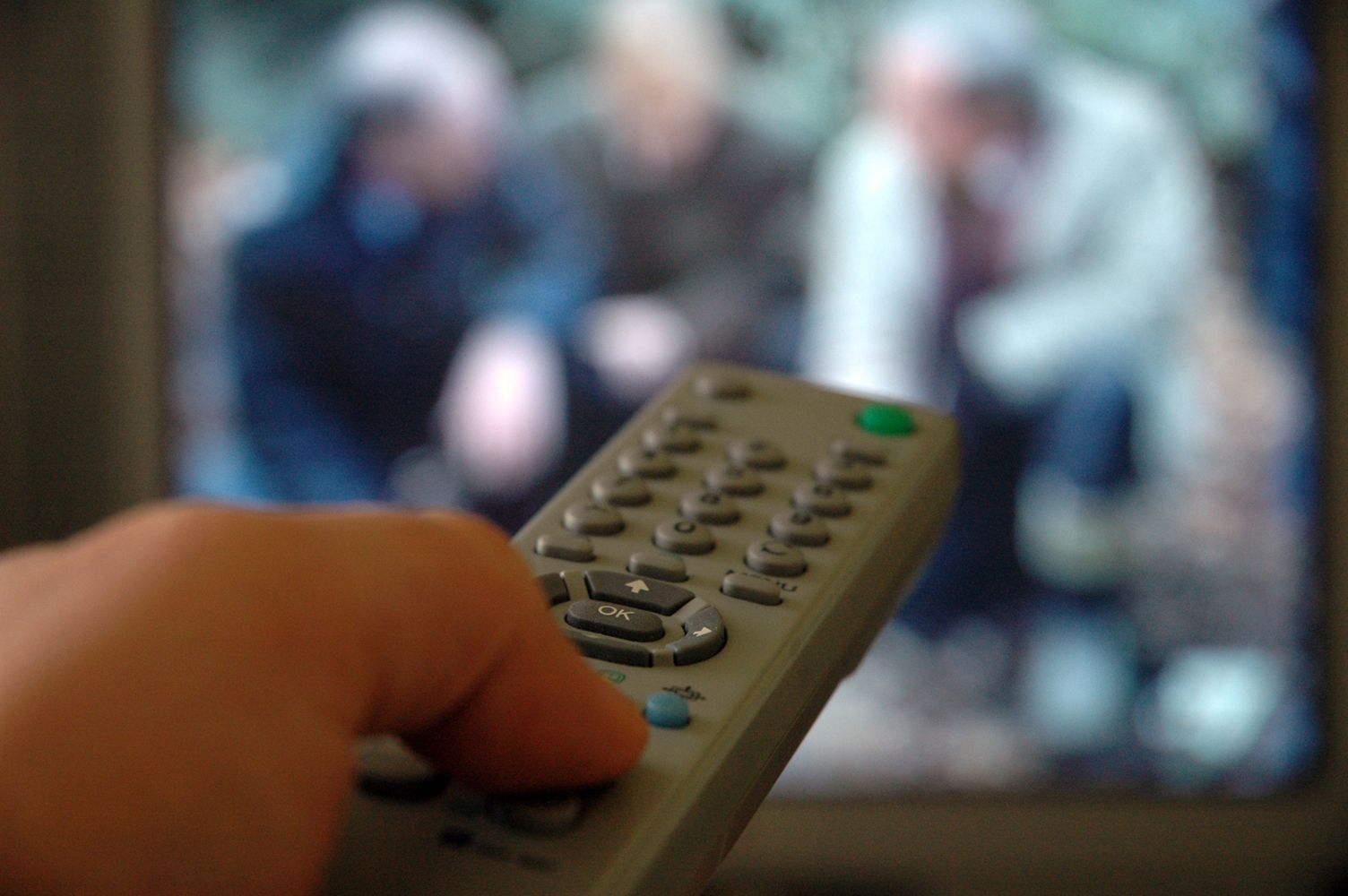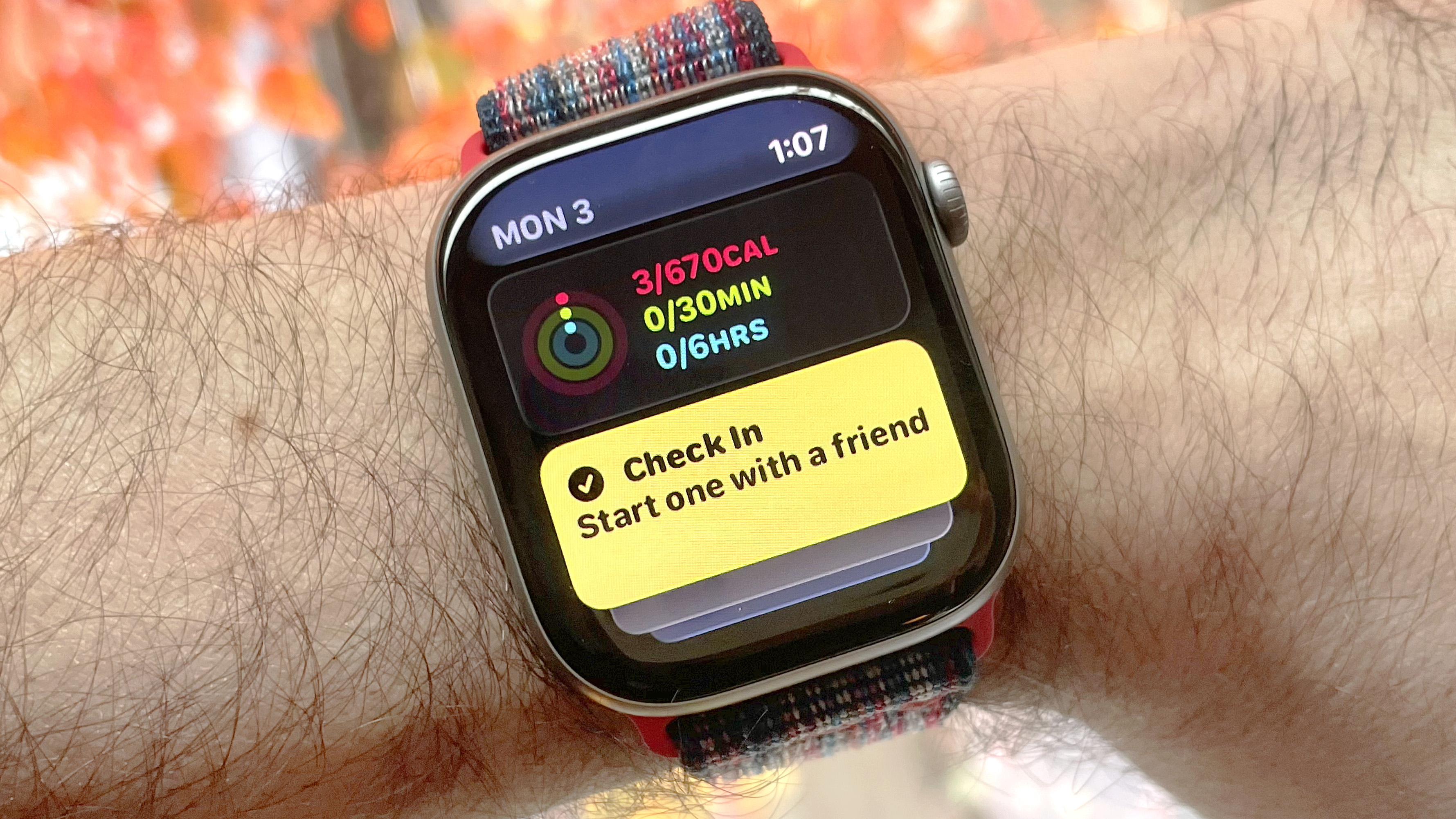The Not-So-Secret Recipe to Disrupt TV (Op-Ed)
Want to "kill" the traditional TV industry and replace it with a startup alternative? You'll have to come up with a cash flow of roughly $70 billion a year, and that's just the beginning.

Jeremy Toeman is the CEO of Dijit Media, which develops technologies for people to discover new ways to experience TV shows and movies. This article was adapted from a post on Medium.com. Toeman contributed this article to Tom's Guide's Expert Voices: Op-Ed & Insights.
To kill the traditional TV industry, it would take about $70 billion per year to maintain the rough production costs (and profits) for all the shows we love to watch. See, there's a perfect blend between live TV broadcasting and an all-streaming/on-demand library, but it's difficult to see how to get there. Meanwhile, it seems like everyone wants to talk about killing/disrupting the TV ecosystem.
So let's talk about the cold, hard facts..
TV shows are expensive to make
While new technologies certainly reduce many aspects of production, if you want a show like "Game of Thrones," "House of Cards," "Mad Men" or "Breaking Bad," you need sets, lighting other equipment and an expensive staff. We cannot get around that.
So regardless of the surge in lower-cost reality shows, if you enjoy quality drama and comedies for 44 or 22 minutes at a time, you need a budget. Unless you can get all the actors, directors, writers, key grips, etc., to take a big salary cut, this will not change.
Advertising pays the bulk of it
Other than for fine shows from HBO, Showtime, Netflix and a handful of others with additional revenue, the money that covers the costs of TV shows comes from the multibillion-dollar ad industry. I am not aware of any model — from subscriptions to a la carte options for individual channels to anything else — that can easily replace that cash flow.
Advertising models are based on real-time viewing
Another tough, but true, fact about the existing ecosystem is that advertising revenue is predicated on live audiences. While I love catchup and streaming as much as anyone, it likely does not contribute much revenue to the bill-paying. For this to change, the massive numbers of people watching programming, and the advertisers supporting it, have to come up with an entirely new model for their world. Again, even if the industry recognizes that there's a trend toward a decrease in live viewership, nobody — anywhere — has yet come up with a successful alternate structure here.
Get instant access to breaking news, the hottest reviews, great deals and helpful tips.
The message is this: TV shows cost a lot of money, and the only way to pay for them is advertising. And the chief way advertisers spend money is on programs viewed live.
If you want, or expect, the above statement to change, get ready for more ads in your streaming — lots of them. Like 8 minutes of ads for every 30 minutes of programming. That's what it would take.
Beyond those points, I want to add my perspective on two additional topics that are trending in the discussion around TV disruption.
1. Pay-TV operators have an arbitrarily bad reputation
It's easy to blame Comcast, AT&T and others for anything and everything, but they should not be pointed to as "the problem" with television. Yes, they have their part to play, but when you consider the fact that someone has to send people into homes to repair lines or answer customer service calls, there is always going to be an easy enemy.
And as much as cable bills have risen dramatically over the past two decades, the cost the operators are paying for content has risen more dramatically. And those costs are not entirely being passed along to consumers. I'm not defending anything about pay-TV providers, but I'm also not in agreement that they are "bad" and everyone else is "good."
2. Most startups are clueless about the TV industry
Yes, that probably sounds harsh. But considering the quantity of companies that spring out of nowhere and want to disrupt or change things, it amazes me how few of them actually take the time to learn enough about the world and business they are getting into.
This is important because the "TV industry" is actually an amalgam of many industries: service providers, content producers, distribution companies, studios, and more. It's easy to say TV industry, but in reality, we shouldn't say it at all. It isn't an industry — it's many industries. My tip to startups: pick one specific subindustry you want to get into/go after/change/kill/whatever, and go learn how it really works.
So there you have it — your simple recipe for how to disrupt the simple world of television. Good luck with that.
This article is adapted from the post Not-So-Secret Recipe to Disrupt TV on the site Medium.com. The views expressed are those of the author and do not necessarily reflect the views of the publisher. This version of the article was originally published on Tomsguide.com.

Tom's Guide upgrades your life by helping you decide what products to buy, finding the best deals and showing you how to get the most out of them and solving problems as they arise. Tom's Guide is here to help you accomplish your goals, find great products without the hassle, get the best deals, discover things others don’t want you to know and save time when problems arise. Visit the About Tom's Guide page for more information and to find out how we test products.
-
agnickolov In order to "kill" an industry, what you need to do is to push it into a downward trend and keep the pressure until it collapses on its own. In order to do that, you need to provide a viable and more appealing alternative where the money goes. It'll eventually reach a new equilibrium, but it'll no longer be as prominent so it'll no longer be fashionable or as profitable to try to "kill" it again.Reply -
williamf3000 It does not take 8 minutes of ads per 30 minutes of entrainment! That is the old model. A properly targeted 30 second ad is much better than 8 minutes of random crap. This is being figured out and quickly. The quality of targeted ads is on an exponential upward trend. 3 years ago, nothing that was "targeted" to me, was actually for me. Now I have something like 25% to 35% of all online ads that I can tell are totally spot on.Reply
Comcast and all its brethren are a dying breed. The technical specs of a Roku or Apple TV already do almost everything that a cable box can do. It is just a matter of pushing he content onto these devices. With these kind of devices and the way that they work means that there is very little need for customer service reps or installation personal. The cable companies should focus on providing bandwidth and dump the old model because it IS on its way out.
Seriously, "most startups are clueless about the TV industry." This is just sensational and intended to get people like me to comment. Right? I hope so. Otherwise, you are completely out of touch with reality. Who are you talking about? Hulu? Uh no, it was created by a massive media company... Universal I believe. Netflix? Humm.. though it has had one major misstep, it is here to stay and innovates like crazy. Amazon? You must be joking! This juggernaut is the Walmart of the 21st Century, but with a much larger reach that Walmart could ever have hoped for. So who are you talking about? Pretty much everyone else that I can think of is a niche player anyway, which is exactly what you said they should be doing.
So there you have it. Either you are a lobbiest for cable providers or you don't live on this planet. In 10 years, cable providers will no longer exist in the form that we know them today. Paid TV will still exist, but the market will be at least 50% smaller and the packages will be streamlined to offer what people actually want and not the 300 BS channels that currently exist. -
icemunk As you will note, currently the best shows on "television" are developed by HBO, and Netflix, both subsription based providers. Cable is going to continue a downward trend as more people flock to the internet based providers, especially with the new generation of smart tv's, playstation/xbox, etc. The old behemoths of entertain need to get on the bandwagon as soon as possible, otherwise they are going to hermorage marketshare. Subscription based consumption is a great model, and will continue to grow. Advertising based shows will also be around, and we already see it moving to the web more and more each day. TV shows will always be around, its just that the traditional cable TV is what is dying, there will always be a steady stream of content suppliers.Reply -
Nam Lam Let's be honest, on a TV people set their favourites. Who truly watches these commercials when they can just jump to MTV and see something more awesome for the duration of the 30second com.break. These ad companies are paying Stations insane amounts of money for which they THINK viewers are watching live. Stream it off their website and slap in a 10-second commercial. People can catchup/stream as MUCH as they like, at the cost of bandwidth. But hey, this is CERTAIN. People aren't going to walk away for 10 seconds, its not enuff time to even get a drink from the fridge for most people. Torrents and what not have made the world a more CONVENIENT place. And the commercial industry and broadcasting stations should REALIZE this important aspect of life and change with the god damn times. Files have been readily for ages now; it is only that it is mainstream that these people are starting to care at their revenue losses when they expect people to impose laws to make their lives more CONVENIENT.Reply -
velocityg4 At $70 billion that equates to about $60 a month per household in the US. That's a heck of a lot cheaper than the current cable model with advertising. Since many of these shows are shown around the world that number drops a heck of a lot more.Reply
Plus it wouldn't really cost that much. As all the crap programming and crap networks would crumble away. Stuff that is getting supported by the current bundle model.
One of the big problems with our system is the Nielsen ratings system. How accurate can the system be? It only gets ratings from the kind of people that could care less about their privacy or really need the money.
Another problem as pointed out is recorded shows or shows streamed online from sites like Hulu not really counting. Especially when coupled with bad timeslots. Such as Firefly or Dollhouse. They were scheduled for Friday nights. That's when the target audience is out on the town. Of course they are going to do bad a fail. How well would Desperate Housewives do if on Saturday mornings?
Personally I'd rather pay a subscription model for the few new shows that are actually good and interesting documentaries only. So not just an a la cart network model. But an a la cart TV Show model. Then have something like Netflix or Amazon Prime for all the old shows. -
RooD I like ads that target me like on Hulu, it kind of let's me know new things I want and then I can research them... I don't need AARP or tampax pearl or the new power rangers toys or the drugs they push on TV. Tech stuff and cars pleaseReply -
superman21 I'm thinking advertisers and networks need to work more on product placement in the shows themselves. Not quite in-your-face like a guy holding up a can and saying "drink Coke!" though; more like conspicuously placed products, being used and enjoyed, etc. I've noticed this a lot lately with Apple products and NBC programming. To me, this seems like the best avenue to explore, as the advertising is happening regardless of when the program is actually being watched. As an added bonus, this leaves creators with even more of a time slot to fill with programming rather than commercial time.Reply
Like anything else, it won't be perfect and it will take time, but I think it's at least a good place to start looking for a better way to spend advertising dollars and still deliver quality products (programming and goods) to the consumer. -
thethirdrace The recipe is simple: have different tiers to distribute your content.Reply
Take the prices with a grain of salt as we don't all have the same prices around the world...
Where: Movie theaters
Price: 15$/movie
Duration: 2 months exclusivity
Where: Premium movie channels
Price: 8$/movie for the first 3 months, 5$/movie after that
Duration: 6 months
Where: Premium streaming AAA (Movies + TV shows)
Price: 100$/month to stream any movie (older than 8 months) or TV show as much as you like
Duration: Infinite as long as you pay your monthly fee
Where: Premium streaming AA (Movies + TV shows)
Price: 80$/month to stream any movie (older than 8 months) or TV show for a maximum of twice a week. You could buy a movie for 5$ and a TV show episode for 1$
Duration: Infinite as long as you pay your monthly fee
Where: Premium streaming A (Movies + TV shows)
Price: 70$/month to stream any movie (older than 8 months) or TV show for a maximum of once a week. You could buy a movie for 5$ and a TV show episode for 1$
Duration: Infinite as long as you pay your monthly fee
Where: Streaming AAA (Movies + TV shows)
Price: 60$/month to stream any movie (older than 18 months) or TV show (older than a month) as much as you like
Duration: Infinite as long as you pay your monthly fee
Where: Streaming AA (Movies + TV shows)
Price: 50$/month to stream any movie (older than 18 months) or TV show (older than a month) for a maximum of twice a week. You could buy a movie for 5$ and a TV show episode for 1$
Duration: Infinite as long as you pay your monthly fee
Where: Streaming A (Movies + TV shows)
Price: 40$/month to stream any movie (older than 18 months) or TV show (older than a month) for a maximum of once a week. You could buy a movie for 5$ and a TV show episode for 1$
Duration: Infinite as long as you pay your monthly fee
Where: Streaming (Movies + TV shows)
Price: 30$/month to stream any movie (older than 24 months) or TV show (older than 6 months) for as much as you like
Duration: Infinite as long as you pay your monthly fee
Where: Streaming (Movies + TV shows)
Price: 20$/month to stream any movie (older than 36 months) or TV show (older than 12 months) for as much as you like
It's really not that complicated. You give a tier for each 10$ with the last being an all you can eat on older stuff. The durations specified are required to continue the revenue "model" currently in place and the limit on viewing is about protecting the DVD sales and the streaming "buy" options. Some would point out that the last tier at 20$ is more than twice the price of Netflix, but you have to understand you would get absolutely every movie and shows available in your country, which is much more than what Netflix offers. -
xtec A $100 a month is why people are dropping cable and satellite! My limit is $60 a month and that would be for tier #3. If not there are a huge number of other forms of entertainment out there. Take video games for example I can get 100 hours of entertainment for $60. I have a pc and two game consoles, and with Netflix and amazonReply
Prime costing only about $15 a month I will never pay $100 for tv ever again! I don't get first run episodes but i don't care. -
hfitch I am getting rid of cable for one reason. I don't watch 95% of it. Why should i be charged 100 dollars for something I don't watch. The shows I do watch are either on HBO or on Netflix. The shows I really want to see now I buy a subscription to either Amazon or Apple. If I buy it one Amazon I watch it on my xbox 360 and usually the show is aired on there the next day no ads. The new model should be new tv shows get first 3 episodes for free to users. Then after pay for each show individually or subscribe for the whole season. Then you would have a true sense of how many veiwers there really are out there.Reply
